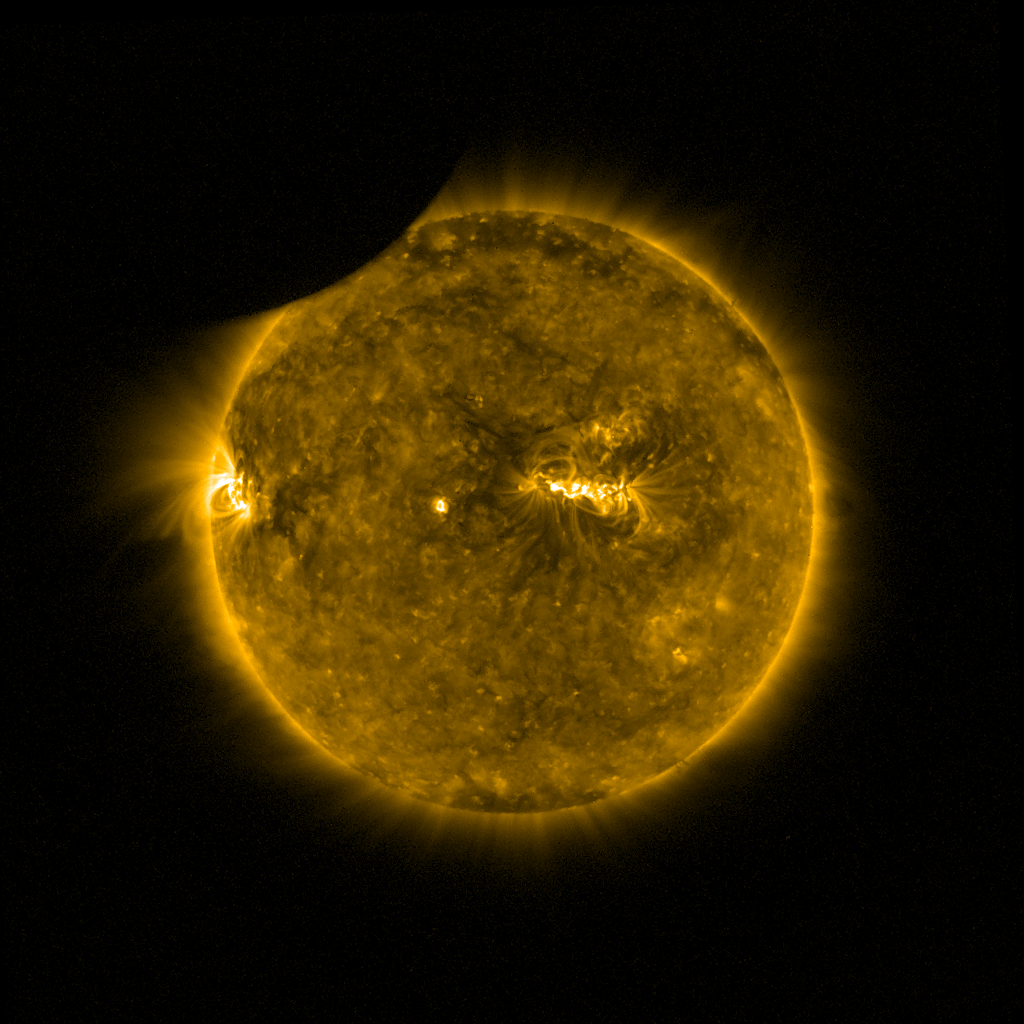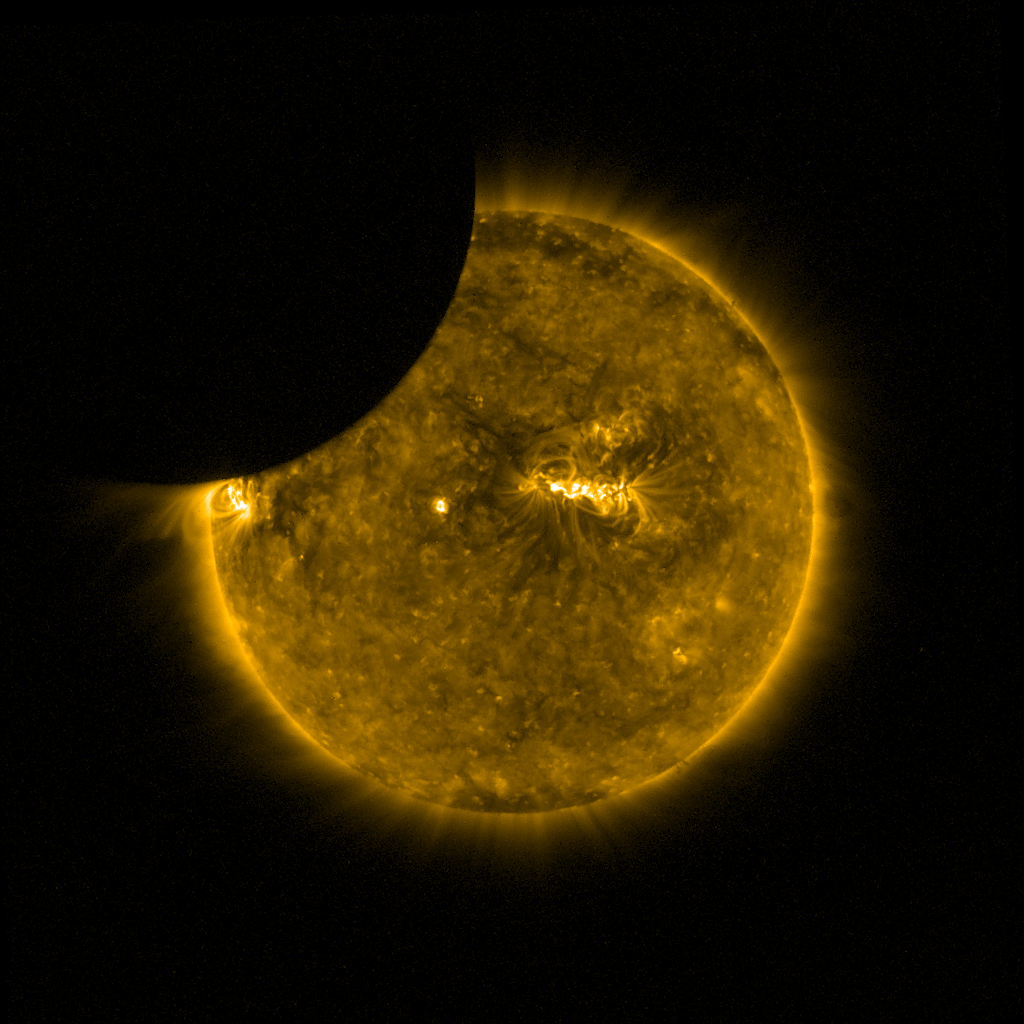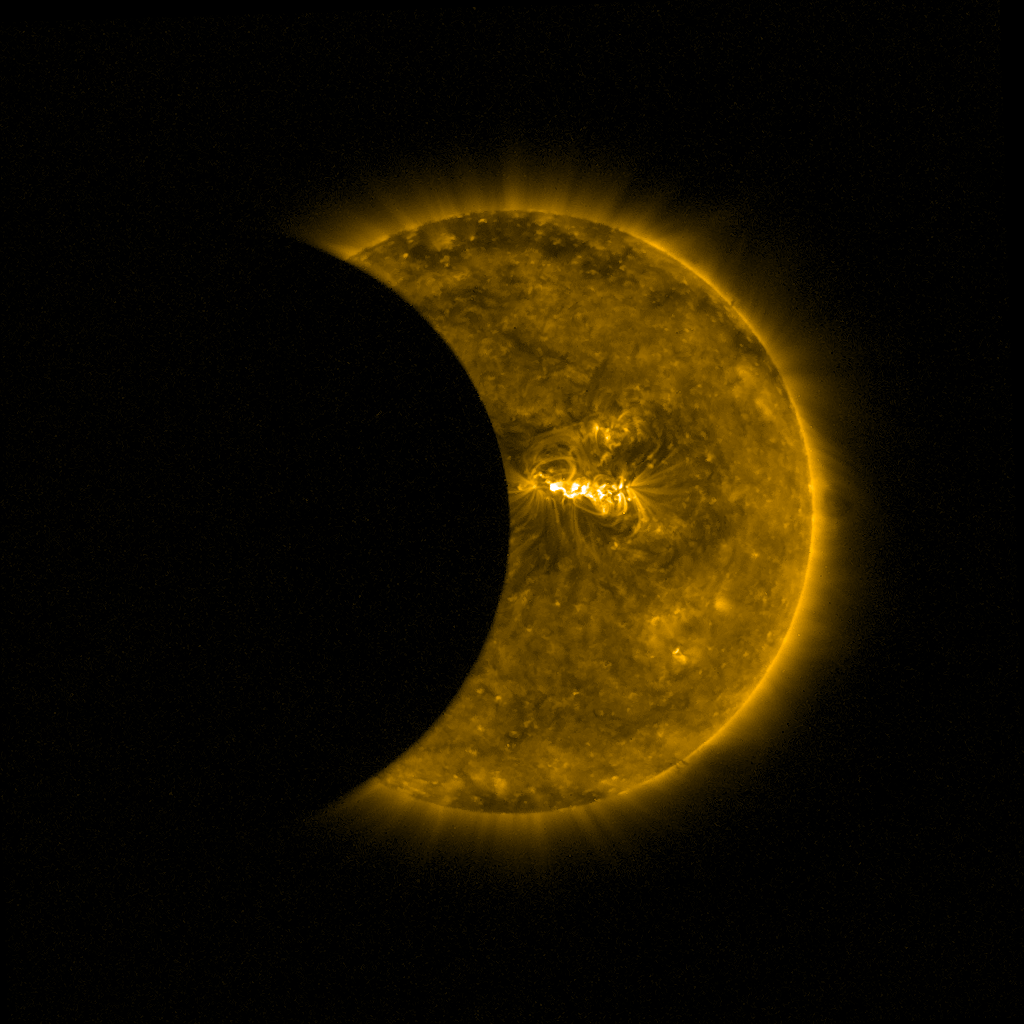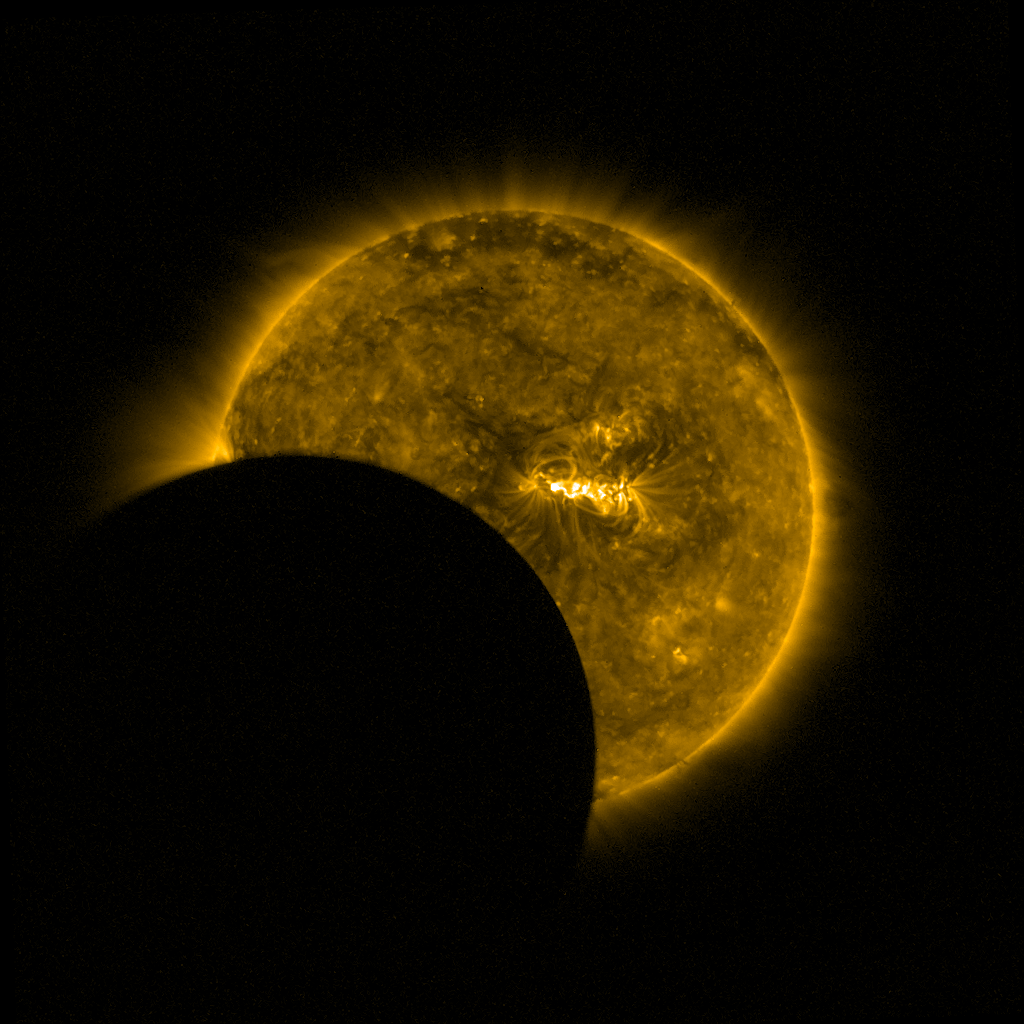






Figure 1. SWAP eclipse image sequence from the first passage of the 2017 August 21 eclipse.
UPDATE: The SWAP images are received from the satellite. Check out the pictures and movies below.
Monday, 21 August 2017 has marked an important celestial event, a total solar eclipse. This was a well observed event, as the eclipse transited the whole of North America. The path of the eclipse can be seen here. People along the path saw a total eclipse, and those outside this path witnessed a partial solar eclipse where the moon covers part of the sun's disk. The eclipse was visible for about two and a half minutes from any location along the path of totality, and first seen on the west coast of the USA in Oregon at around 10:19 am PDT and finally in South Carolina at around 02:44 p.m EDT (more timing information can be found here). For more information on other types of eclipses, visit here.